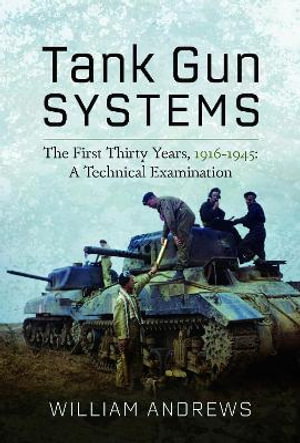
PublishedPen And Sword, June 2023 |
ISBN9781399042352 |
FormatHardcover, 576 pages |
Dimensions24.6cm × 17.2cm |
Covers tank guns from eight countries (Britain, France, Germany, the Soviet Union, Japan, Italy, Czechoslovakia and the United States). Much has been written about the use of tanks in battle. Little, however, has appeared about the gunnery systems that are at their core.
This book describes and examines the main gun systems of medium and heavy tanks from first use in 1916 in World War I to those fielded in numbers to the end of World War II in 1945, including tanks of the interwar period. Specifically considered are guns of a calibre greater than 35 mm, which have been deployed in numbers greater than 100. The emphasis is on guns mounted in turrets on heavier tracked armoured fighting vehicles (greater than 15 tonnes) which were considered tanks. There are, though, exceptions, in that the naval 6 pounder guns in First World War British tanks, as well as the 75 mm guns in French medium tanks of the same period (all turretless) are included. The treatment of gun systems includes sighting and fire control equipment, gun laying equipment, mounts and the array of munitions fired, as well as the actual gun, including its, barrel, cradle, breech, firing mechanism, sights and recoil system. Related to this are issues of gun handling (loading and unloading), ammunition design and rates of fire. Also examined are the maximum impulse and energy generated by firing some of the munitions available that must be absorbed by the gun recoil system. AUTHOR: William Andrews received a Bachelor of Chemical Engineering degree from the Royal Military College of Canada (RMC). He subsequently completed a master's degree and doctorate in nuclear engineering, also at RMC. After graduation, he served in the Canadian Army in the Armour and the Royal Canadian Electrical and Mechanical Engineering Branches. His regimental duty included tours with the 12eme Regiment Blinde du Canada, the Royal Canadian Dragoons and the 8th Canadian Hussars and at the Armour School. After completion of his doctorate, he retired from the army and joined the faculty of RMC, where he taught chemical engineering and military science topics at the undergraduate and graduate levels. The military science courses included ammunition and weapon design and ballistics. He is now fully retired and is a Professor Emeritus of RMC. 300 colour, 700 b/w illustrations

